Sunday, September 29, 2024
Today, our Smithsonian Journeys tour, Portrait of Portugal, began. After a lovely Dom Pedro breakfast buffet, we 43 tourers met in the lobby and then, were bused to our first stop, the Jeronimos (or Hieronymites) Monastery near the Tagus River.
This 16th century monastery was orginally built by King Manuel I for monks of the Order of Saint Jerome during Portugal’s Age of Discovery. Vasco da Gama and his crew, as well as other explorers, prayed for divine guidance here before departing on their expeditions. Indeed, da Gama’s tomb is in a chapel of the church although we did not get to view it.
When we arrived, long lines of people were waiting outside of this popular over-touristed monastery. Because three Sunday masses were being held in the church, we were only allowed entry into the cloisters. Waiting in line outside provided us with an opportunity to study the external features of this highly ornate edifice.
—— Jeronimos Monastery ——
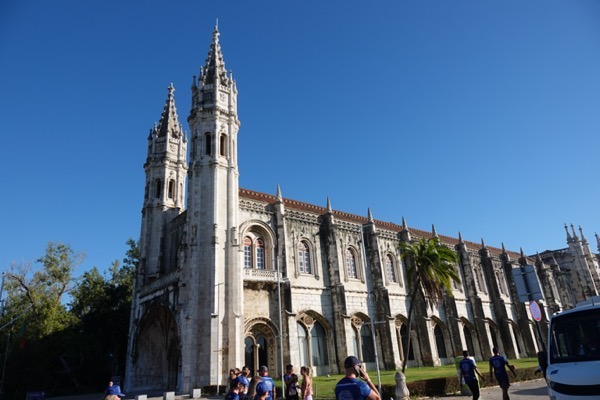
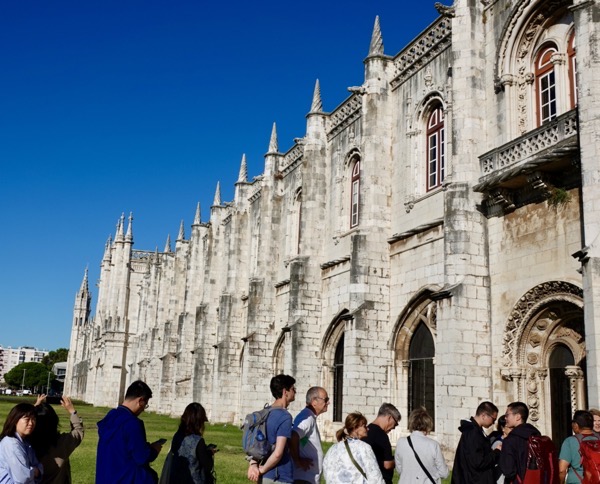
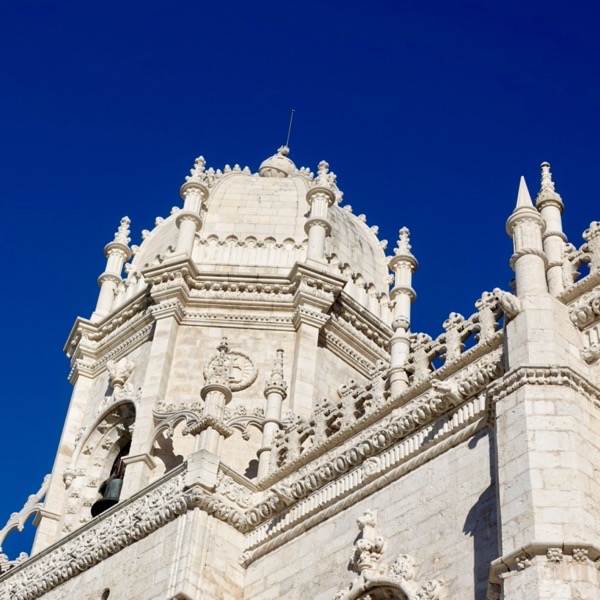
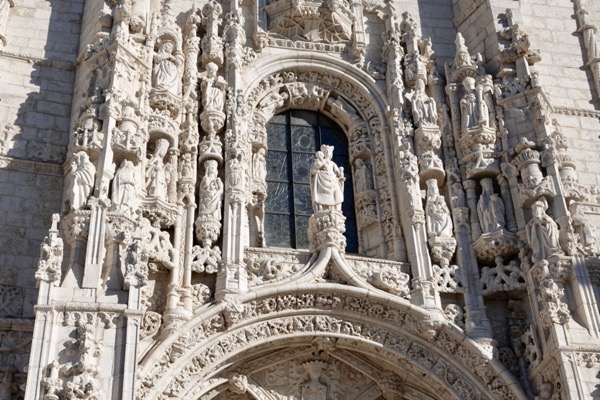
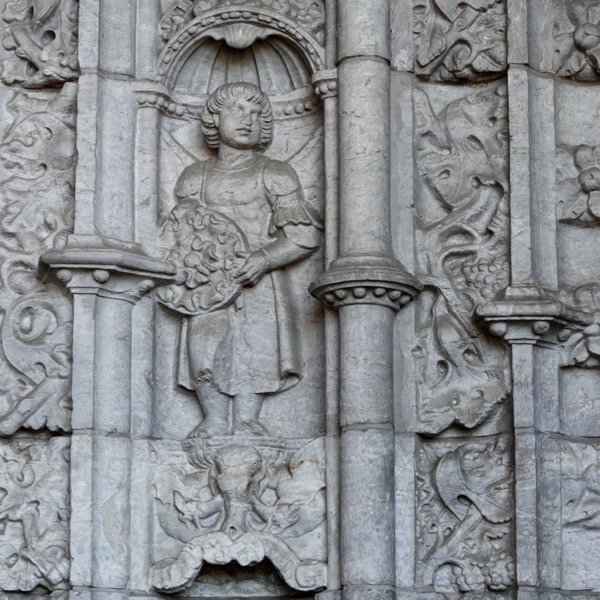
Our Smithsonian guide was able to get our group through the south portal relatively quickly and herded us into the two-storied cloister arcades. Wow! We followed our guide around gawking as she pointed out various architectural features.
The monastery and its cloister were designed in a style that has become known as Manueline (after King Manuel I). Manueline marks a transition from Late Gothic to Renaissance styles and served to glorify the great discoveries of the age by incorporating maritime symbols among its many flamboyant ornamentations. While we traversed the arcades with our guide, I tried to hang within earshot of our Smithsonian expert, Eric, who was also pointing out and explaining the abundant Manueline features.
—— Cloisters of Jeronimos Monastery ——
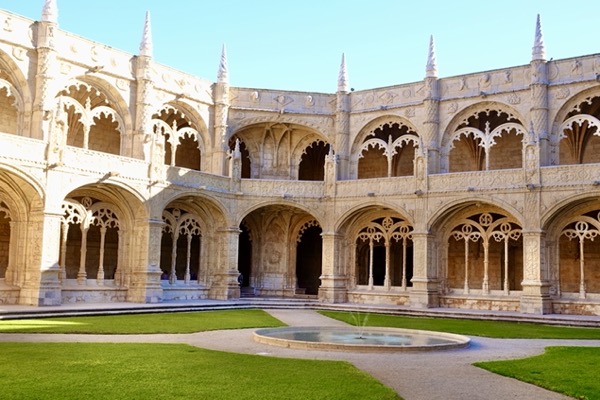
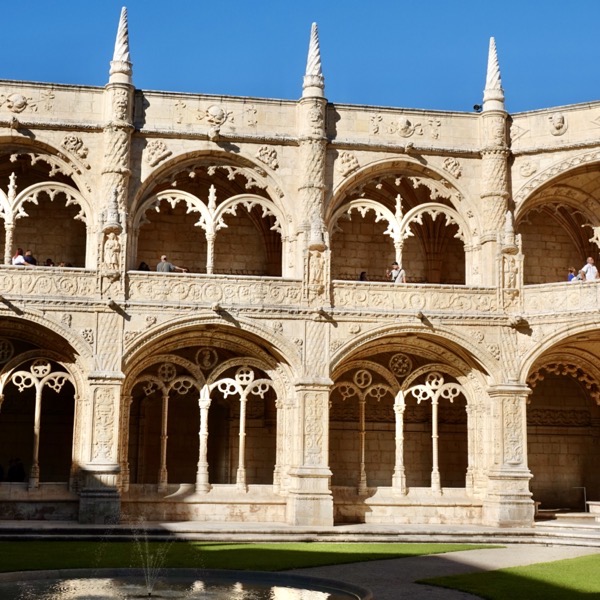
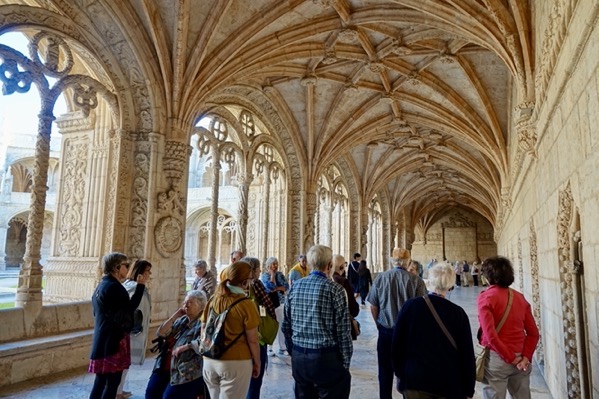
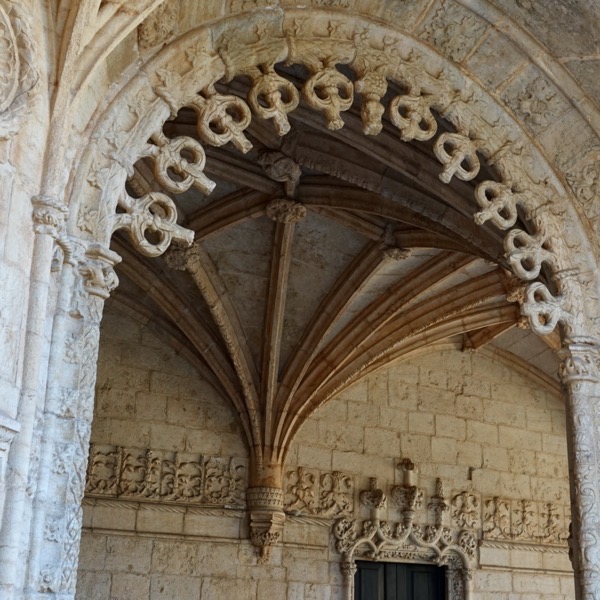
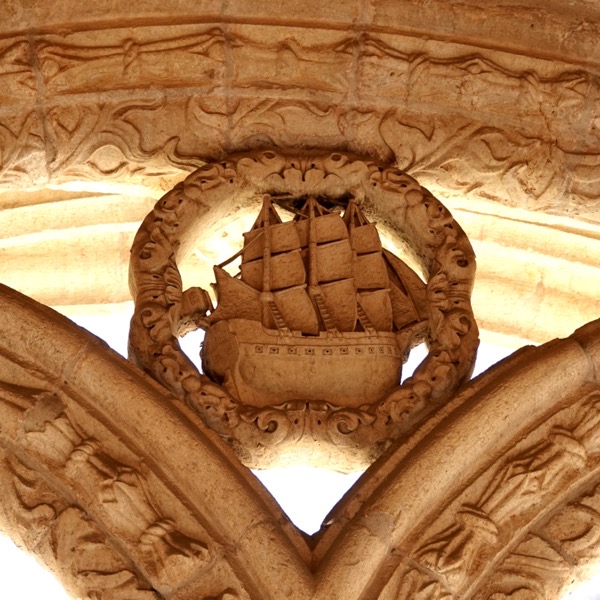
Eventually, we entered a room off the main cloister arcade that housed the tomb of Alexandre Heculano (1810-1877), a novelist and historian from Lisbon. The crucifixion scene was displayed on one of the end walls of this room. A fellow Smithsonian tourist and I both noticed how the sunlight filtered through and formed an eerie ghost-like image before the crucifix. It seemed as if the apparitions of two past explorers were praying for safe passage through the unknown.
On our way out of the cloisters, we passed through the Refectory, the monks’ dining room, with colorful azulejo tiles from the 18th century.
—— Tomb of Alexandre Heculano ——
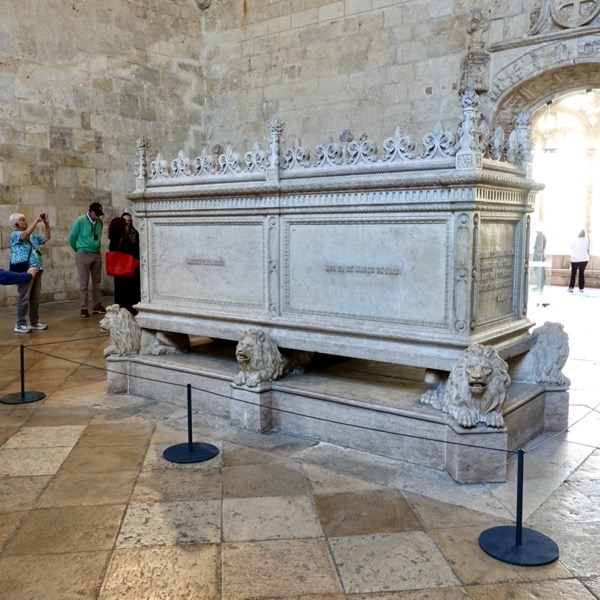
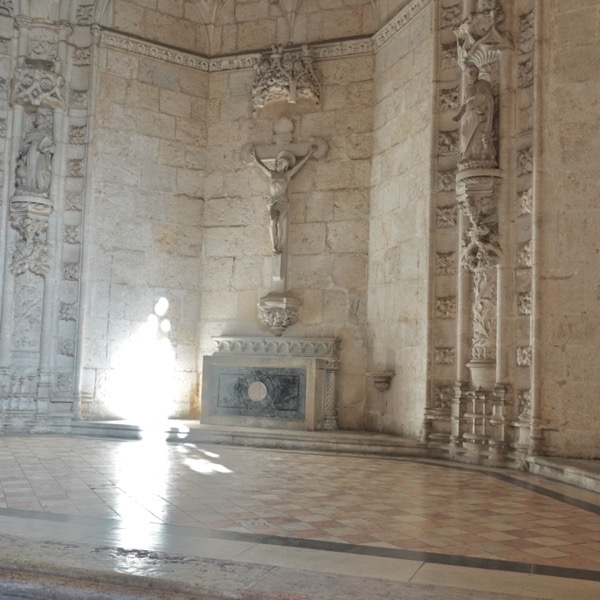
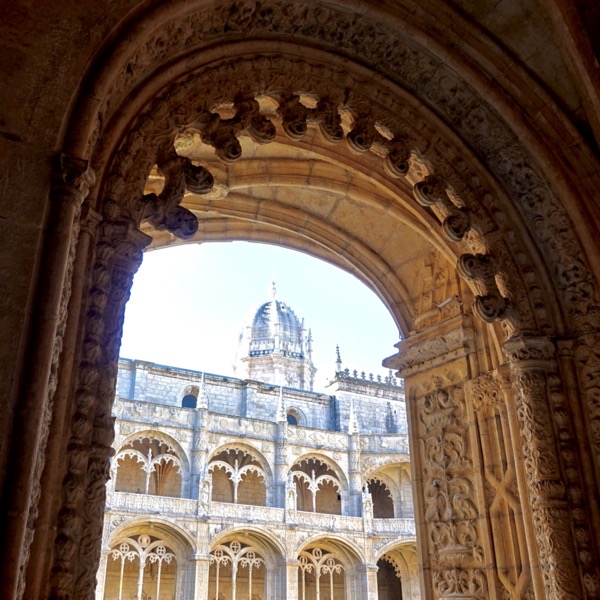
—— Refectory ——
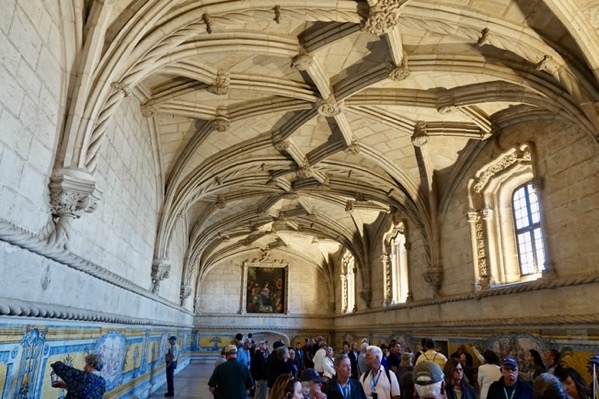

After exiting the cloisters, we were directed to a spot to wait while our coach maneuvered through the traffic to pick us up. We were beside a parking lot bounded on one side by the Maritime Museum and on the other side by the Maritime Planetarium. Coincidently, a vintage sports car show was wrapping up in this parking lot. We walked through the cars on display and jealously watched as the owners smartly departed in their venerable vehicles.
—— Vintage Sports Car Show ——
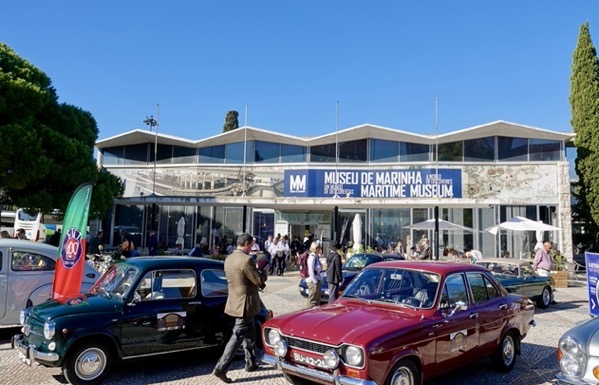
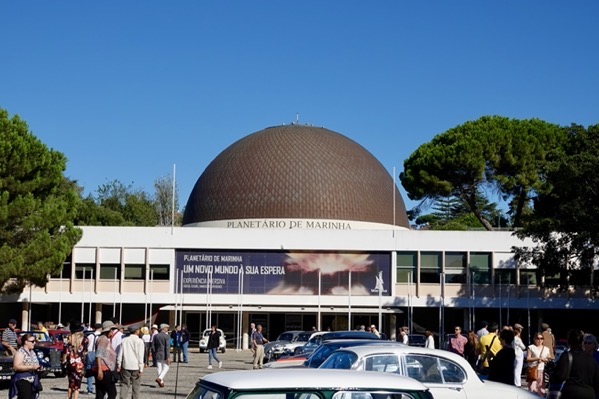
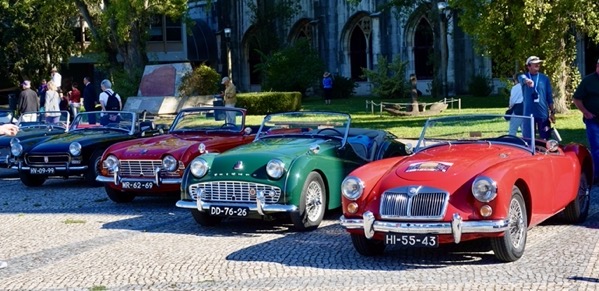
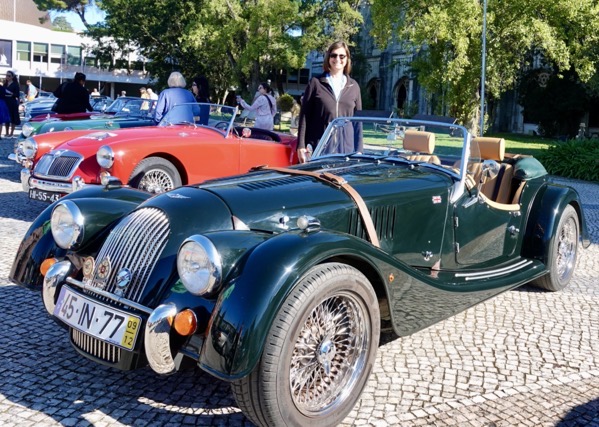
We were bused from the Jeronimos Monastery to the nearby Belem Tower on the Tagus River. This 16th-century fortification is another example of Manueline style architecture and served as a launch and return point for Portuguese explorers as well as a symbolic gateway to Lisbon. Again, there was a large tourist crowd so that we did not enter the tower but instead, enjoyed the view and photo opportunity during our brief visit.
—— Belem Tower ——

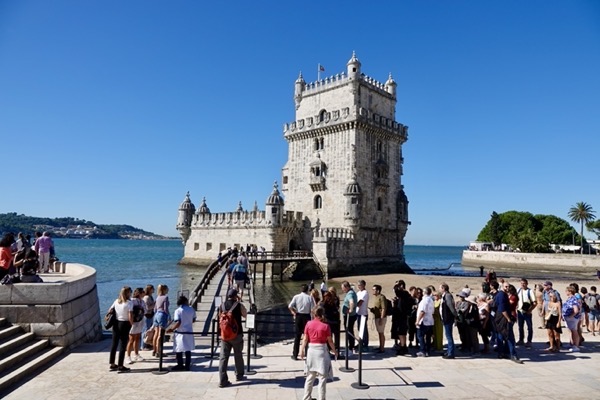
After a very short bus ride (< 1 mile), we were deposited near Lisbon’s iconic Monument of the Discoveries. This monument is located alongside the northern bank of the Tagus River with a view of the April 25th Bridge and the Sanctuary of Christ the King (across the river). The monument was completed in 1958 and romanticizes the glory days of Portuguese world exploration.
A large compass rose and world map are displayed in the stone plaza below the monument. Our Smithsonian guide gathered us there to point out the routes of various explorers but the large crowd obfuscated her attempts by walking across or standing on the map.
The 184-foot tall Monument of Discovery is shaped like a ship prow with idealized sails. Sixteen figures representing heroes of Portugal’s Age of Discovery line each side of the prow. The foremost figure (making 33 total) is Henry the Navigator holding a sailing vessel (carrack). We enjoying walking around the monument and viewing the intricately carved figures on both its east and west sides.
—— Monument of the Discoveries ——
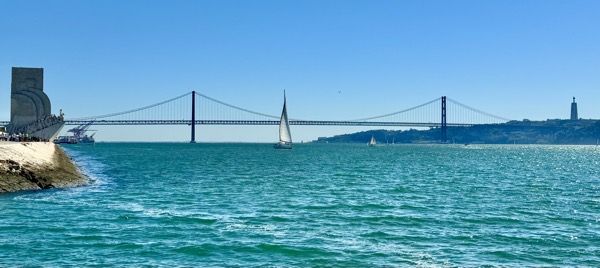
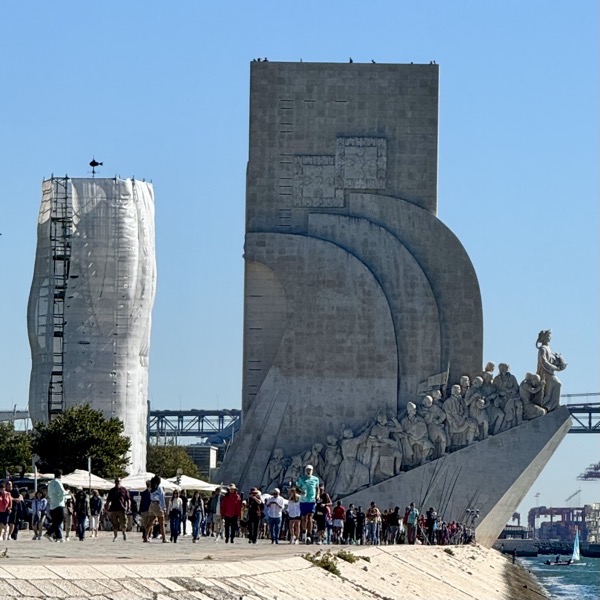
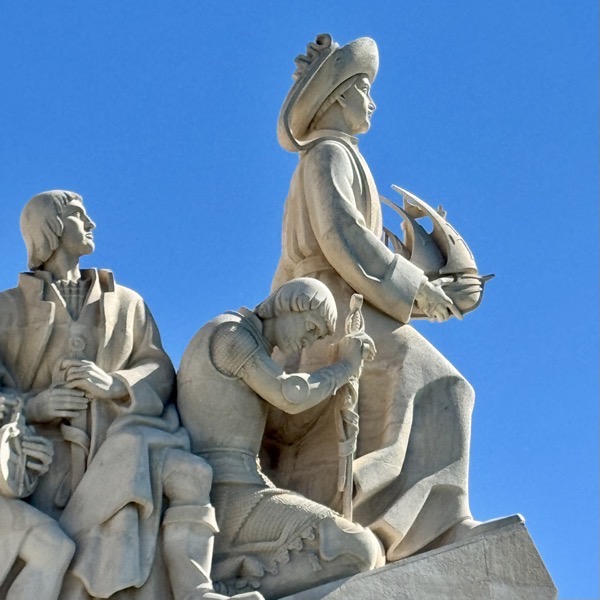
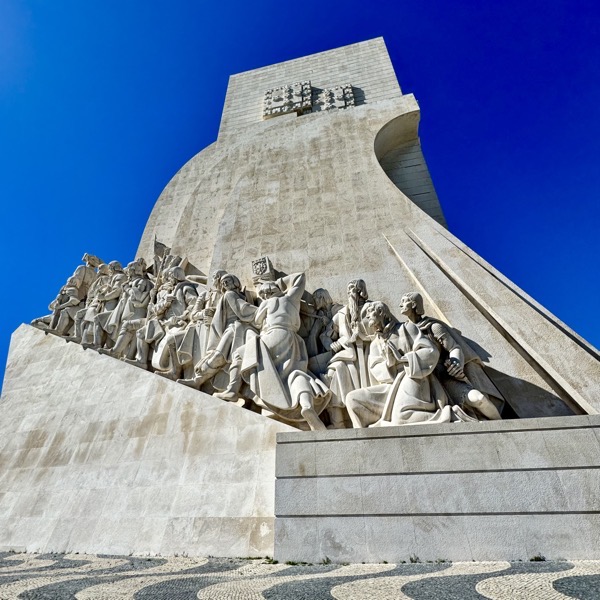
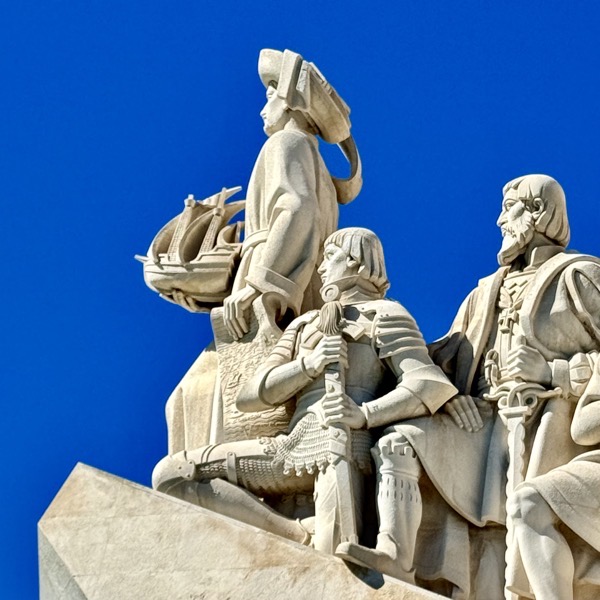
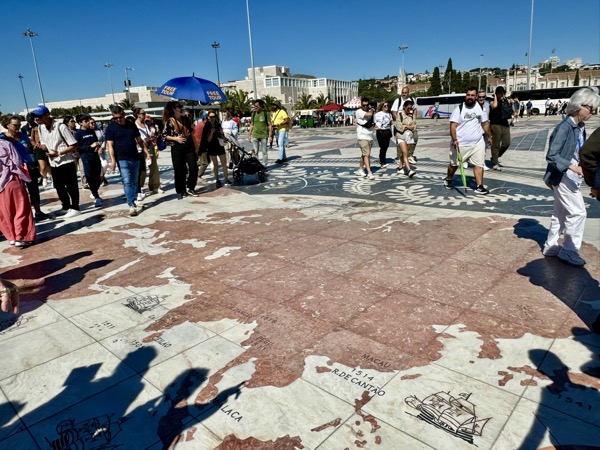

On our bus ride back to the Dom Pedro Hotel, we passed through the posh Estrela District. Then, the four of us walked from the hotel about 20 minutes to visit Estufia Fria at Eduardo Park. Estufia Fria translates to “cold greenhouse.” The original greenhouse was set up in an abandoned basalt quarry with no supplemental heat but used wooden slats on the roof to regulate the temperature. Today, the complex consists of three different greenhouses, Estufa Fria (Cold Greenhouse), Estufa Quente (Warm Greenhouse), and Estufa Doce (Sweet Greenhouse). These environments provide conditions to cultivate plants from most global ecosystems.
We took a relaxing stroll through the impressive 3.7-acre greenhouse enjoying exotic plants, water features, resting benches, stairs, overlooks, and even a grotto. It was a pleasant respite from the crowds and noise.
—— Estufa Fria ——
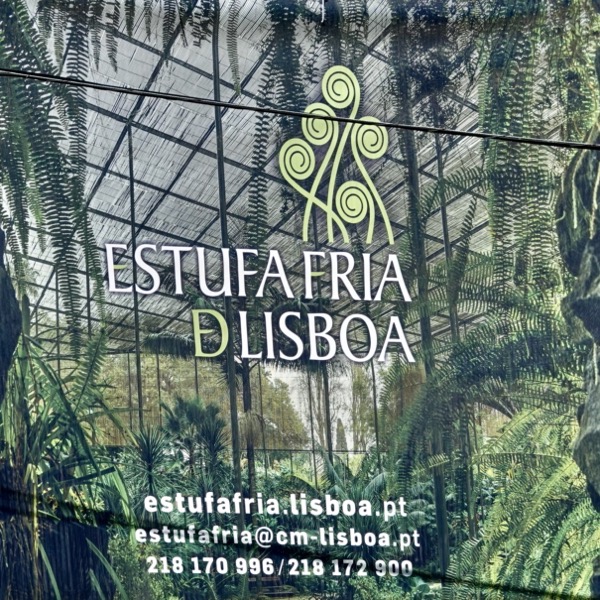
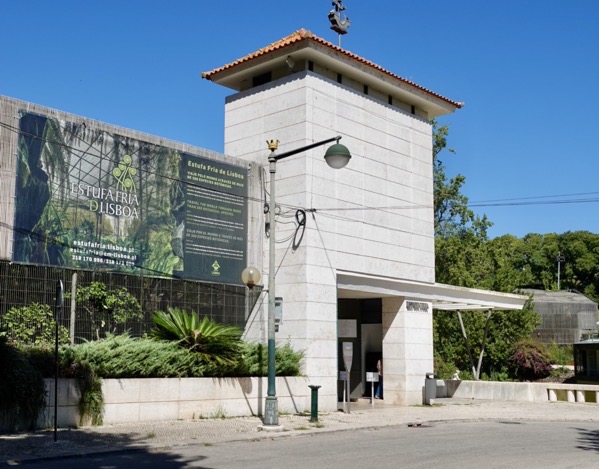
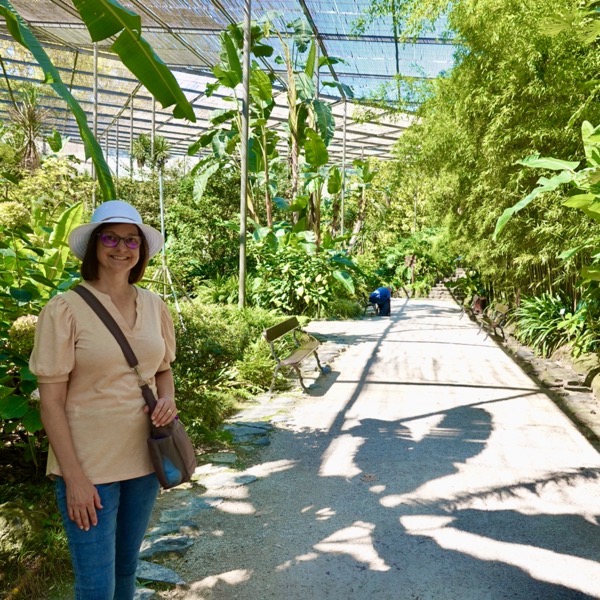

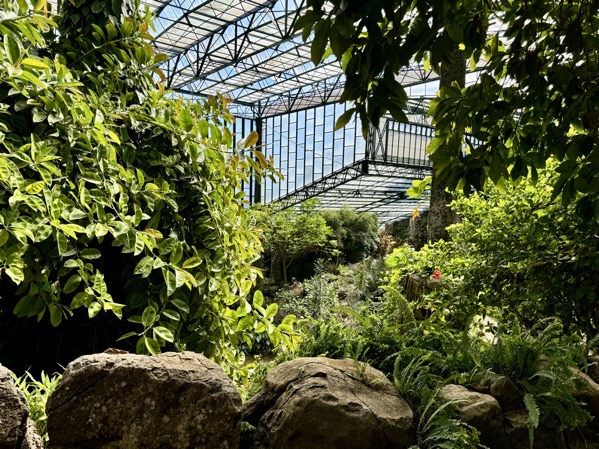
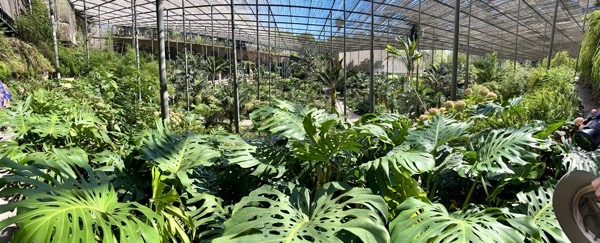
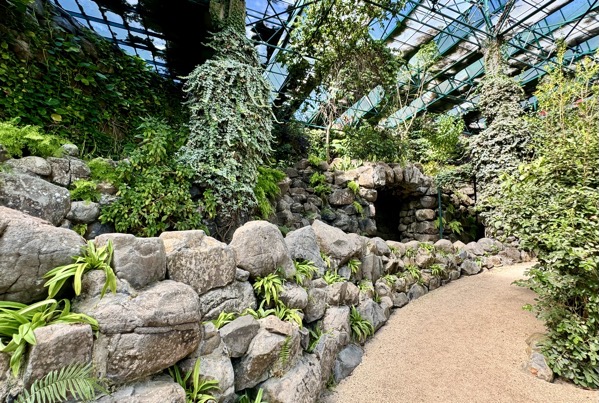
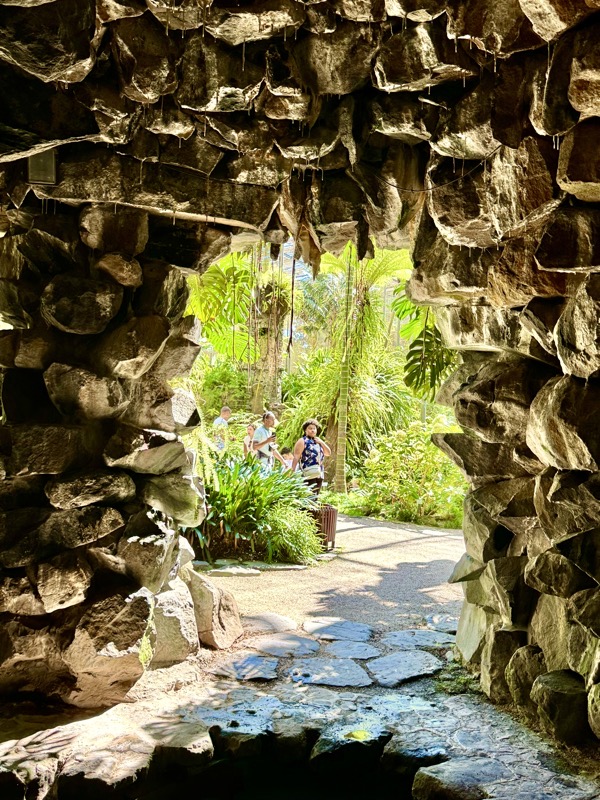

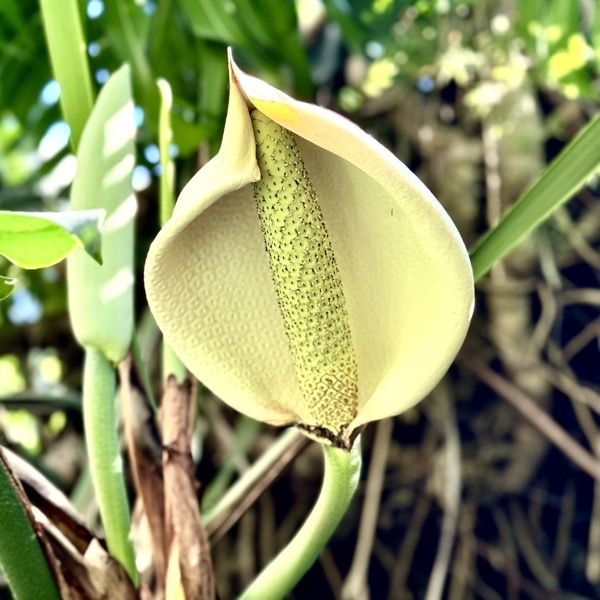
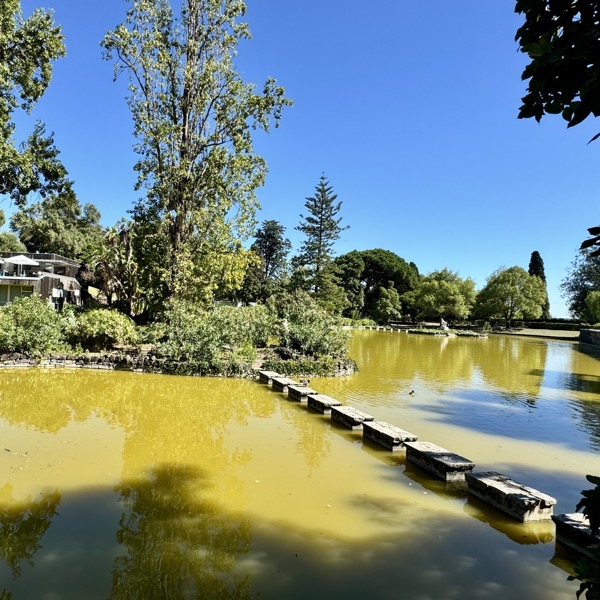
After visiting Estufa Fria, Jane and I walked back to the hotel where Jane napped and I caught up on news from home including the devasting effects of Hurricane Helene. At 5:00 pm, we headed downstairs and attended a lecture given by Eric, our Smithsonian expert. He spoke about the Manueline style of architecture including some of the examples that we had witnessed this morning at the monastery and tower.
— Evening Lecture about Manueline Architecture ——
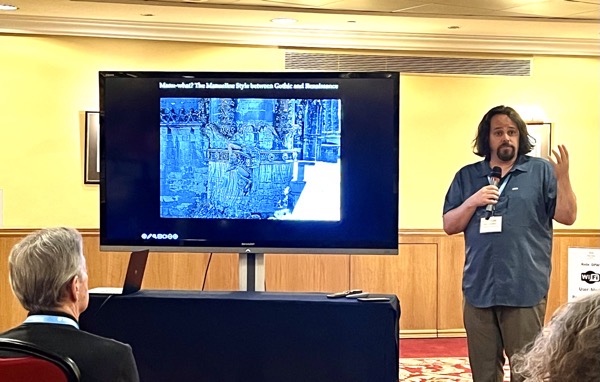
Our tour group rode the bus from the hotel the Senor Vinho restaurant for our 7:00 pm dinner. I had an excellent meal consisting of one of the best sea bass dishes I’ve ever eaten accompanied by unlimited wine (a local Syrah / Tinta Roriz blend), and dessert.
After dinner, we were treated to a live Fado performance. Fado is a type of Portuguese traditional folk music charaterized by mournful tunes and melancholy lyrics. Our show began with two instrumentalists playing an acoustic guitar and a Portuguese guitar. The Portuguese guitar had twelve strings strung in six courses of two, a lute-like body, a shortened fretboard, and funky-looking tuners.
I moved from our table to be able to see and hear the performance better. Their instrumental tunes were well-executed with the Portuguese guitarist mostly playing lead while the other guitarist provided bass and rhythm support. After a few instrumental tunes, a female fadista joined them and sang with an emotion that transparently conveyed the pain of the lyrics (that I couldn’t understand). Both the locals and tourists in the audience were enthralled.
—— Dinner and Fado at Sr. Vinho ——



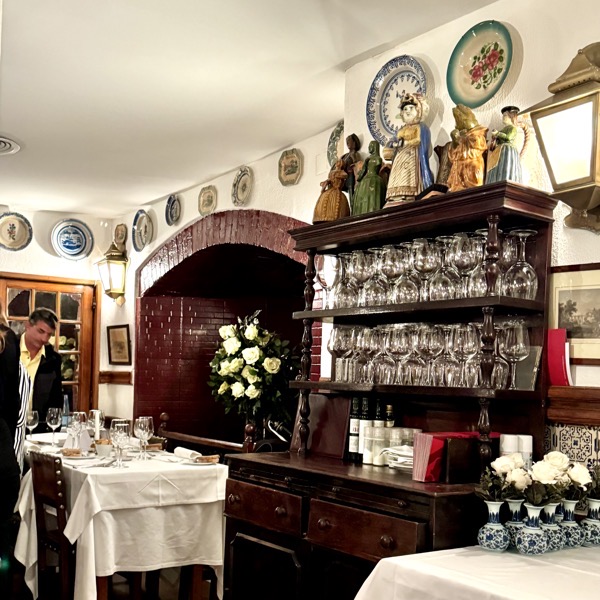
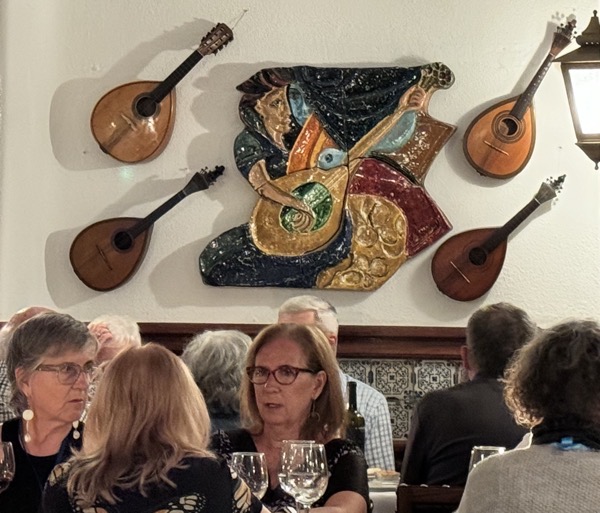
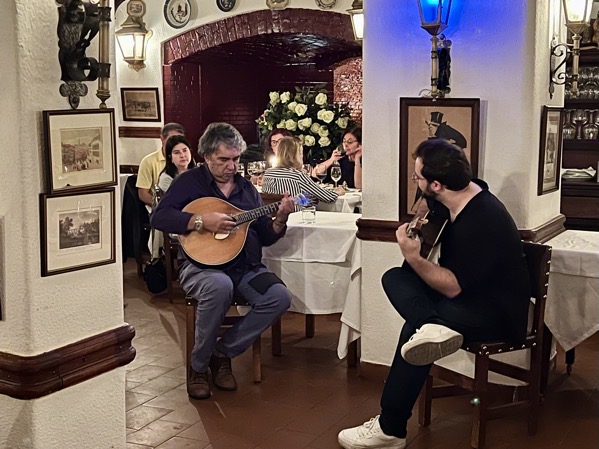

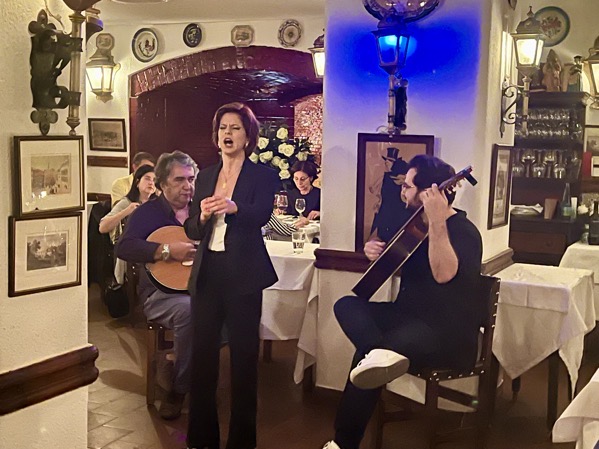
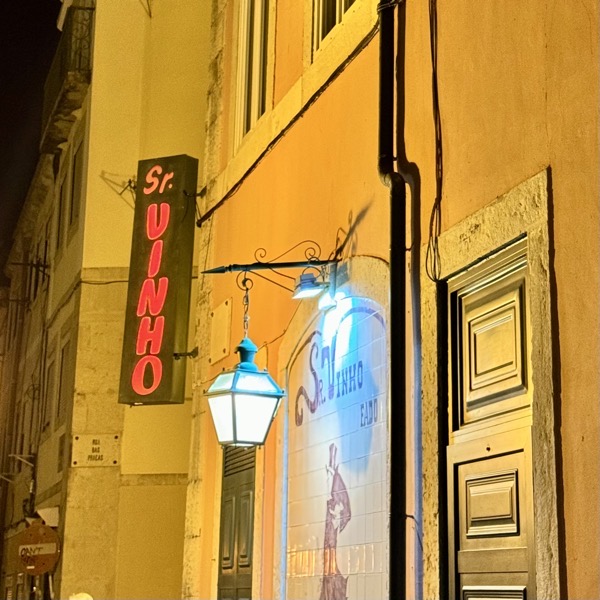
Following the fantastic meal and music, we returned to the Dom Pedro Hotel satiated and ready for a much needed night of sleep.